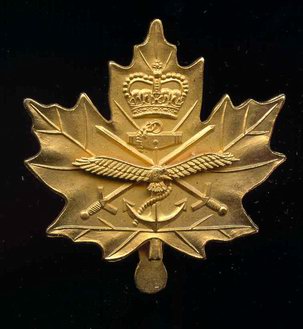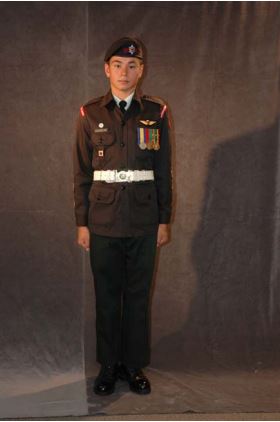|
Cadet Services Of Canada
The Cadet Services of Canada was a Corps of the Canadian Army created in 1909. It was superseded by the Cadet Instructors List (CIL), later renamed the Cadet Instructors Cadre. The CS of C was disbanded with the unification of the Canadian Forces on 1 February 1968. The CS of C was composed of commissioned militia officers of the former Canadian Army The Canadian Army (french: Armée canadienne) is the command responsible for the operational readiness of the conventional ground forces of the Canadian Armed Forces. It maintains regular forces units at bases across Canada, and is also res ... before unification, whose purpose was the training of the Royal Canadian Army Cadets. It not only included officers from the militia, but also officers from the regular forces who were on vacation. {{DEFAULTSORT:Cadet Services Of Canada Canadian Armed Forces personnel branches Cadet Instructors Cadre (Canada) ... [...More Info...] [...Related Items...] OR: [Wikipedia] [Google] [Baidu] |
Cadet Instructors Cadre
The Cadet Instructors Cadre (CIC; french: Cadre des instructeurs de cadets) consists of approximately 7,500 Canadian Forces (CF) officers whose primary duty is the safety, supervision, administration and training of Royal Canadian Sea, Army, and Air Cadets. The branch is the largest single group within the Canadian Forces reserve force subcomponent Cadet Organizations Administration and Training Service (COATS) and is the largest officer branch in the Canadian Forces. It is also the only branch of the Canadian Armed Forces that doesn't require its officer to hold or be in the process of obtaining a post secondary degree. The COATS subcomponent of the Reserve Force employs members from all branches and occupations of the Royal Canadian Navy, Canadian Army, and Royal Canadian Air Force of the Canadian Forces. Cadets are youth 12 to 18 years of age, and participate in 1,150 Sea and Army Cadet Corps and Air Cadet Squadrons located across Canada. According to Canadian Forces Chief of R ... [...More Info...] [...Related Items...] OR: [Wikipedia] [Google] [Baidu] |
Canadian Forces
} The Canadian Armed Forces (CAF; french: Forces armées canadiennes, ''FAC'') are the unified military forces of Canada, including sea, land, and air elements referred to as the Royal Canadian Navy, Canadian Army, and Royal Canadian Air Force. Personnel may belong to either the Regular Force or the Reserve Force, which has four sub-components: the Primary Reserve, Supplementary Reserve, Cadet Organizations Administration and Training Service, and the Canadian Rangers. Under the '' National Defence Act'', the Canadian Armed Forces are an entity separate and distinct from the Department of National Defence (the federal government department responsible for administration and formation of defence policy), which also exists as the civilian support system for the Forces. The Canadian Armed Forces are a professional volunteer force that consists of approximately 68,000 active personnel and 27,000 reserve personnel, increasing to 71,500 and 30,000 respectively under "Strong, Secure ... [...More Info...] [...Related Items...] OR: [Wikipedia] [Google] [Baidu] |
Militia
A militia () is generally an army or some other fighting organization of non-professional soldiers, citizens of a country, or subjects of a state, who may perform military service during a time of need, as opposed to a professional force of regular, full-time military personnel; or, historically, to members of a warrior-nobility class (e.g. knights or samurai). Generally unable to hold ground against regular forces, militias commonly support regular troops by skirmishing, holding fortifications, or conducting irregular warfare, instead of undertaking offensive campaigns by themselves. Local civilian laws often limit militias to serve only in their home region, and to serve only for a limited time; this further reduces their use in long military campaigns. Beginning in the late 20th century, some militias (in particular officially recognized and sanctioned militias of a government) act as professional forces, while still being "part-time" or "on-call" organizations. For instan ... [...More Info...] [...Related Items...] OR: [Wikipedia] [Google] [Baidu] |
Canadian Army
The Canadian Army (french: Armée canadienne) is the command responsible for the operational readiness of the conventional ground forces of the Canadian Armed Forces. It maintains regular forces units at bases across Canada, and is also responsible for the Army Reserve, the largest component of the Primary Reserve. The Army is headed by the concurrently held Commander of the Canadian Army and Chief of the Army Staff, who is subordinate to the Chief of the Defence Staff. The Army is also supported by 3,000 civilian employees from the civil service. Formed in 1855, as the Active Militia, in response to the threat of the United States to the Province of Canada after the British Garrison left for the Crimean War. This Militia was later split into the Permanent Active Militia and the Non-Permanent Active Militia. Finally, in 1940, an Order in Council was issued to rename the active militias to the Canadian Army. On 1 April 1966, prior to the unification of the Canadian Armed For ... [...More Info...] [...Related Items...] OR: [Wikipedia] [Google] [Baidu] |
Royal Canadian Army Cadets
The Royal Canadian Army Cadets (RCAC; french: Cadets royaux de l’Armée canadienne) is a national Canadian youth program sponsored by the Canadian Armed Forces and the civilian Army Cadet League of Canada. Under the authority of the National Defence Act, the program is administered by the Canadian Armed Forces and funded through the Department of National Defence. Additionally, the civilian partner of the Royal Canadian Army Cadets, the Army Cadet League of Canada, also ensures financial, accommodations and transportation support for RCAC programs and services at a community level. Many Royal Canadian Army Cadet corps receive logistical assistance and administrative support from their affiliated Regular Force or Reserve Force unit. While cadets may wear the badges and accoutrements of their affiliated unit, cadets are not members of the Canadian Armed Forces. With roots in the early drill associations authorized in 1861, Royal Canadian Army Cadets is Canada's oldest youth pr ... [...More Info...] [...Related Items...] OR: [Wikipedia] [Google] [Baidu] |
Canadian Armed Forces Personnel Branches
Canadians (french: Canadiens) are people identified with the country of Canada. This connection may be residential, legal, historical or cultural. For most Canadians, many (or all) of these connections exist and are collectively the source of their being ''Canadian''. Canada is a multilingual and multicultural society home to people of groups of many different ethnic, religious, and national origins, with the majority of the population made up of Old World immigrants and their descendants. Following the initial period of French and then the much larger British colonization, different waves (or peaks) of immigration and settlement of non-indigenous peoples took place over the course of nearly two centuries and continue today. Elements of Indigenous, French, British, and more recent immigrant customs, languages, and religions have combined to form the culture of Canada, and thus a Canadian identity. Canada has also been strongly influenced by its linguistic, geographic, and ec ... [...More Info...] [...Related Items...] OR: [Wikipedia] [Google] [Baidu] |


